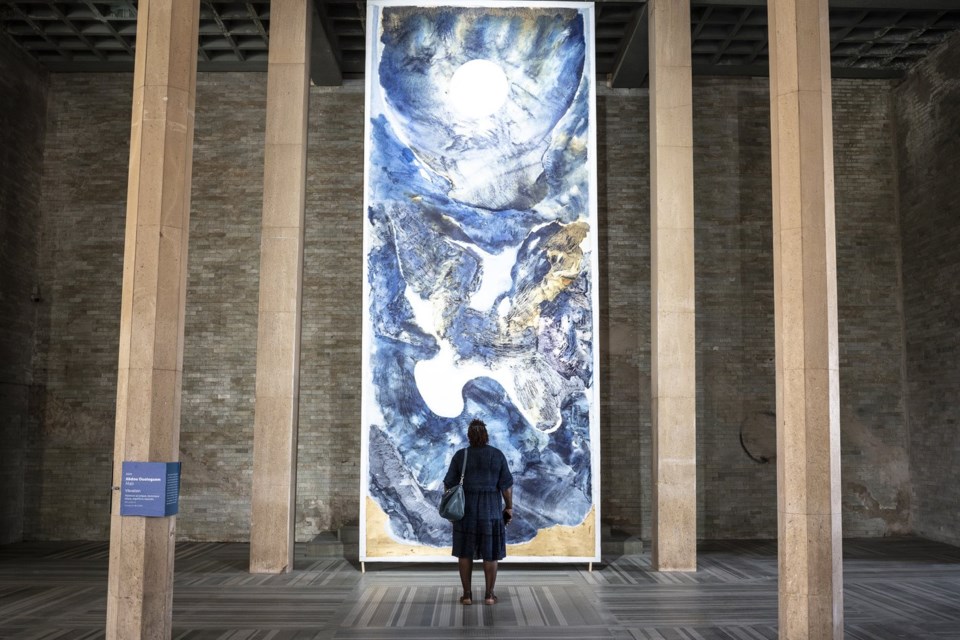DAKAR, Senegal (AP) — A whirlwind of color and art at the opening of this year's Dakar Biennale of Contemporary African Art in the Senegalese capital stood in stark contrast to the serious topic of slavery featuring in the artworks of guest artists from the United States.
The U.S. exhibit showcases seven African American artists whose works examine the past, present and future repercussions of slavery. It's part of the international festival held every other year and known as Dak’Art.
Traditional “boubous,” wide-sleeved robes worn across West Africa, mixed with black suits and ties at the opening Thursday in Dakar, the capital of Senegal.
The exhibition, founded in 1989 by the Senegalese government to , has over the years become one of the most important among African artists.
This year's theme, “The Wake,” has 58 artists from 33 countries exploring various meanings and evocations of the term, such as exhumation, mourning and uprooting, according to the organizers.
The central idea behind it is to link the past and the future by giving them equal importance, Salimata Diop, Dak’Art’s artistic director said in a statement distributed to the media.
The United States was the guest of honor of this year’s show.
The work of African American artists explored cultural beliefs about the afterlife held by Lebou, one of Senegal's ethnic groups. The Lebou believe that in the afterlife, spirits dwell eternally in the ocean.
There was also an entire new alphabet depicted on the curly hair pattern of African hair, as well as an immersive exhibit attempting to let viewers experience what it might have felt like to be a slave and be thrown into the water.
The wake of slavery impacted all Americans, said Diana Baird N’Diaye, the show's curator. She is based between the U.S. and Senegal. The displayed art does not only relate to the past, but also looks towards the future, she added.
“We are here because they (our ancestors) survived slavery in America," she said. “We are here because our ancestors, our grandparents survived Jim Crow.”
"And now we are at another crucial moment,” Baird N’Diaye said.
The Dak'Art comes as several countries in the region are stepping away from traditional Western allies and turning towards new partners, such as Russia and China, with a less complicated history in the region.
In a region rocked in recent years , Senegal has managed to maintain its reputation as a stable democracy. Still, Senegal's ruling party, which is facing an election next week, has pledged to review its relationship with Western countries, but so far has not made any radical decisions.
Khady Diène Gaye, Senegal's minister of youth, sports and culture, told reporters that the U.S. role as the guest of honor is “a display of the importance of art as a tool for dialogue between peoples, the promotion of peace, mutual understanding, but most importantly as a tool for economic and social development.”
The Dak’Art runs until Dec. 7. Originally scheduled for May, it was postponed following and funding issues that the new authorities blamed on the former administration.
Monika Pronczuk And Mark Banchereau, The Associated Press



